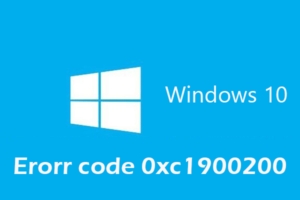-
Table of Contents
- Exploring the Enhanced User Interface of Windows 11’s Settings Homepage
- Understanding the Functionalities and Features of Windows 11’s New Settings Homepage
- A Comprehensive Guide to Navigating Windows 11’s Settings Homepage
- Analyzing the Pros and Cons of Windows 11’s Settings Homepage Redesign
- Tips and Tricks for Customizing and Personalizing Windows 11’s Settings Homepage
- Q&A
Windows 11’s new Settings homepage: Half promotion, half pointless.
The new Settings homepage in Windows 11 is a combination of promotional content and features that may not be relevant to all users.
Exploring the Enhanced User Interface of Windows 11’s Settings Homepage
Windows 11, the latest operating system from Microsoft, has introduced several new features and enhancements to improve the user experience. One of the notable changes is the revamped Settings homepage, which aims to provide a more intuitive and streamlined interface for users to customize their system settings. However, upon closer inspection, it becomes apparent that the new Settings homepage is a mix of promotion and pointless additions.
At first glance, the new Settings homepage in Windows 11 appears sleek and modern, with a clean layout and visually appealing design. The prominent search bar at the top allows users to quickly find specific settings they need, making it easier to navigate through the various options. Additionally, the categorized sections on the left-hand side provide a clear overview of the available settings, making it convenient for users to locate the desired options.
However, as users delve deeper into the Settings homepage, they may notice an excessive amount of promotional content. Microsoft has taken the opportunity to showcase its own products and services, such as Microsoft Edge, OneDrive, and Microsoft 365, by featuring them prominently within the Settings app. While it is understandable that Microsoft wants to promote its offerings, the inclusion of these promotional elements feels intrusive and detracts from the primary purpose of the Settings app.
Furthermore, some of the additions to the Settings homepage seem unnecessary and redundant. For instance, the inclusion of a “Recommended” section, which suggests settings that Microsoft believes users should enable, feels like an unnecessary intrusion into the user’s decision-making process. Users should have the freedom to customize their settings according to their preferences, rather than being guided by Microsoft’s recommendations.
Another questionable addition is the “Tips and Tricks” section, which provides users with helpful information and tutorials on how to use various features of Windows 11. While this may be useful for novice users, it feels out of place within the Settings app. Users typically visit the Settings app to configure system settings, not to learn about tips and tricks. Microsoft could have integrated this information into a separate app or provided it through a dedicated help center, rather than cluttering the Settings homepage.
Despite these shortcomings, there are some positive aspects to the enhanced user interface of Windows 11’s Settings homepage. The improved organization of settings into categories makes it easier for users to locate specific options, reducing the time spent navigating through various menus. Additionally, the search bar at the top allows for quick access to specific settings, further enhancing the user experience.
In conclusion, while the new Settings homepage in Windows 11 offers a visually appealing and streamlined interface, it falls short in terms of its excessive promotion and unnecessary additions. Microsoft should prioritize the user’s needs and preferences when designing the Settings app, rather than using it as a platform for self-promotion. By addressing these issues, Microsoft can create a more user-centric and efficient Settings homepage that truly enhances the overall Windows 11 experience.
Understanding the Functionalities and Features of Windows 11’s New Settings Homepage
Windows 11, the latest operating system from Microsoft, has introduced a new Settings homepage that aims to provide users with a centralized location for managing their system preferences and configurations. However, upon closer inspection, it becomes evident that this new feature is a mixed bag of promotional content and redundant options.
One of the first things that users will notice when accessing the Settings homepage is the prominent presence of promotional tiles. These tiles showcase various Microsoft products and services, such as Microsoft Edge, Microsoft 365, and Xbox Game Pass. While it is understandable that Microsoft wants to promote its offerings, the excessive focus on these tiles can be overwhelming and distracting for users who are simply looking to adjust their system settings.
Furthermore, the inclusion of these promotional tiles raises questions about the true purpose of the Settings homepage. Is it primarily meant to be a platform for managing system configurations, or is it more of a marketing tool for Microsoft? This ambiguity undermines the functionality of the feature and leaves users wondering if their needs are truly being prioritized.
Moving beyond the promotional aspect, the Settings homepage does offer a range of options for users to customize their Windows 11 experience. From personalization settings to accessibility features, there is a comprehensive set of tools available. However, upon closer examination, it becomes apparent that many of these options are redundant and could have been consolidated into more streamlined categories.
For example, the homepage includes separate sections for “System,” “Devices,” and “Network & Internet,” each containing similar options and settings. This redundancy not only clutters the interface but also makes it more difficult for users to navigate and find the specific settings they are looking for. A more intuitive organization of these options would have greatly enhanced the user experience.
Additionally, some of the settings on the homepage seem unnecessary or out of place. For instance, the inclusion of a “Gaming” section, which primarily focuses on Xbox-related settings, feels disconnected from the overall purpose of the Settings homepage. While gaming is undoubtedly an important aspect of Windows 11, it would have made more sense to integrate these settings within the existing categories, rather than creating a separate section.
In conclusion, Windows 11’s new Settings homepage is a feature that falls short of its potential. While it does offer a range of customization options, the excessive promotion of Microsoft products and services, along with the redundant and misplaced settings, detract from its functionality. A more streamlined and user-centric approach would have greatly improved the overall experience. As users continue to explore and adapt to Windows 11, it is hoped that Microsoft will take user feedback into account and make the necessary improvements to enhance the usability and effectiveness of the Settings homepage.
A Comprehensive Guide to Navigating Windows 11’s Settings Homepage
Windows 11, the latest operating system from Microsoft, brings with it a revamped Settings homepage. This new design aims to provide users with a more streamlined and intuitive experience when it comes to customizing their system settings. However, upon closer inspection, it becomes clear that the new Settings homepage is a mixed bag of promotional content and redundant features.
One of the first things you’ll notice when opening the Settings app in Windows 11 is the prominent placement of recommended settings and features. These recommendations are meant to help users discover new functionalities and optimize their system. While this may seem helpful at first glance, it quickly becomes apparent that these recommendations are more about promoting Microsoft’s own products and services rather than genuinely assisting users.
For instance, you might find recommendations to sign in with a Microsoft account or enable OneDrive cloud storage. While these suggestions may be relevant to some users, they can feel intrusive and unnecessary for those who have already made their preferences clear during the initial setup process. It’s disappointing to see the Settings homepage cluttered with promotional content that adds little value to the user experience.
Another issue with the new Settings homepage is the redundancy of certain features. Windows 11 introduces a new quick settings panel that can be accessed by clicking on the network, volume, or power icons in the taskbar. This panel provides easy access to commonly used settings such as Wi-Fi, Bluetooth, and display brightness. However, these same settings are also available in the Settings app itself, making the quick settings panel feel redundant and unnecessary.
Furthermore, the organization of settings in the new Settings homepage can be confusing and unintuitive. While the previous version of Windows had a clear and logical hierarchy of settings categories, Windows 11 opts for a more visually appealing but less practical approach. Settings are now grouped into broad categories such as System, Personalization, and Accounts, but within these categories, it can be challenging to find specific settings without resorting to the search function.
Despite these shortcomings, there are still some positive aspects to the new Settings homepage in Windows 11. The updated design is undeniably sleek and modern, with a focus on simplicity and visual appeal. The use of rounded corners, subtle animations, and a consistent color scheme creates a cohesive and visually pleasing experience. Additionally, the search function within the Settings app is powerful and efficient, allowing users to quickly find the settings they need without having to navigate through multiple menus.
In conclusion, while the new Settings homepage in Windows 11 may have its fair share of flaws, it still offers some improvements over its predecessor. The sleek design and powerful search function are undoubtedly welcome additions. However, the excessive promotion of Microsoft’s own products and redundant features detract from the overall user experience. Hopefully, Microsoft will take user feedback into account and make necessary adjustments to create a more user-centric and efficient Settings homepage in future updates.
Analyzing the Pros and Cons of Windows 11’s Settings Homepage Redesign
Windows 11, the latest operating system from Microsoft, has introduced a redesigned Settings homepage. This new layout aims to provide users with a more streamlined and intuitive experience when accessing and managing their system settings. However, upon closer inspection, it becomes apparent that the new Settings homepage is a mix of promotion and pointless features.
One of the main advantages of the new Settings homepage is its visually appealing design. The layout is clean and modern, with a focus on simplicity and ease of use. The settings are organized into categories, making it easier for users to find what they are looking for. Additionally, the use of icons and clear labels helps users quickly identify the settings they need to adjust.
However, the new Settings homepage also includes a significant amount of promotional content. Microsoft has taken the opportunity to showcase various features and services, such as Microsoft 365 and Xbox Game Pass. While it is understandable that Microsoft wants to promote its products, the inclusion of these promotions on the Settings homepage feels out of place. Users accessing the Settings menu are typically looking for specific system settings, not advertisements for additional services.
Furthermore, some of the features on the new Settings homepage seem unnecessary and add little value to the user experience. For example, there is a section called “Recommended settings” that suggests changes to optimize the system. While this may be helpful for novice users, more experienced users may find these recommendations redundant or even annoying. Additionally, the inclusion of a “Quick actions” section, which provides shortcuts to frequently used settings, feels like a duplication of functionality that already exists in the taskbar or the Action Center.
Another drawback of the new Settings homepage is the lack of customization options. Users are unable to rearrange or remove sections, meaning they are stuck with the default layout. This lack of flexibility may frustrate users who prefer a more personalized experience or have specific preferences for organizing their settings.
Despite these drawbacks, the new Settings homepage does have some positive aspects. The inclusion of a search bar at the top of the page allows users to quickly find specific settings without having to navigate through multiple categories. This feature is particularly useful for users who are not familiar with the organization of the settings or those who need to access a specific setting quickly.
In conclusion, Windows 11’s new Settings homepage is a mixed bag. While it offers a visually appealing design and improved organization of settings, it also includes promotional content that feels out of place. Additionally, some of the features seem unnecessary and lack customization options. Ultimately, the effectiveness of the new Settings homepage will depend on the individual user’s preferences and needs.
Tips and Tricks for Customizing and Personalizing Windows 11’s Settings Homepage
Windows 11, the latest operating system from Microsoft, brings with it a revamped Settings homepage. While the intention behind this redesign is to provide users with a more streamlined and intuitive experience, it falls short in some areas. In this article, we will explore some tips and tricks for customizing and personalizing Windows 11’s Settings homepage to make it more useful and efficient.
One of the first things you may notice when opening the Settings homepage is the prominent presence of promotional content. Microsoft has taken the opportunity to showcase various features and services, such as Microsoft 365 and Xbox Game Pass, right on the homepage. While this may be beneficial for some users who are interested in these offerings, it can be distracting and overwhelming for others who simply want to access the settings they need.
To overcome this issue, you can customize the homepage by removing or rearranging the promotional tiles. Simply right-click on a tile and select “Remove” to get rid of it. You can also drag and drop the tiles to rearrange them according to your preference. By decluttering the homepage and prioritizing the settings you frequently use, you can create a more focused and efficient experience.
Another aspect of the Settings homepage that may seem pointless to some users is the inclusion of redundant categories. For example, there are separate sections for “System” and “Personalization,” which can lead to confusion and duplication of settings. To address this, you can collapse or expand categories based on your needs. Simply click on the arrow next to a category to collapse it and hide the settings within. This way, you can declutter the homepage and only display the categories that are relevant to you.
Furthermore, Windows 11’s Settings homepage offers limited customization options in terms of visual appearance. The default layout and color scheme may not suit everyone’s preferences. However, there are ways to personalize the homepage to make it more visually appealing. You can change the accent color by going to “Personalization” settings and selecting a different color from the options provided. Additionally, you can choose a custom background image to add a personal touch to the homepage. These small tweaks can go a long way in making the Settings homepage feel more personalized and enjoyable to use.
In addition to customization options, Windows 11 also introduces new features and settings that can enhance your overall experience. For example, the “Widgets” feature allows you to access personalized news, weather updates, and calendar events directly from the homepage. You can customize the widgets by selecting the ones you find most useful and rearranging them to your liking. This way, you can have quick access to relevant information without having to navigate through multiple apps or websites.
In conclusion, while Windows 11’s new Settings homepage may have its shortcomings, there are several tips and tricks you can employ to make it more tailored to your needs. By customizing the homepage, removing unnecessary promotional content, and personalizing the visual appearance, you can create a more efficient and enjoyable experience. Additionally, taking advantage of new features like widgets can further enhance your productivity. With a little bit of tweaking and exploration, you can make the most out of Windows 11’s Settings homepage.
Q&A
1. What is the purpose of Windows 11’s new Settings homepage?
The purpose of Windows 11’s new Settings homepage is to provide users with a centralized location to access and manage various system settings and configurations.
2. Does the new Settings homepage in Windows 11 include promotional content?
Yes, the new Settings homepage in Windows 11 includes promotional content, which can be seen as a way to promote Microsoft products and services.
3. Is the promotional content in Windows 11’s Settings homepage considered useful?
The usefulness of the promotional content in Windows 11’s Settings homepage may vary depending on individual preferences and needs.
4. Does the promotional aspect of Windows 11’s Settings homepage detract from its functionality?
The promotional aspect of Windows 11’s Settings homepage may be seen as unnecessary or distracting by some users, potentially detracting from its primary functionality.
5. Is the new Settings homepage in Windows 11 solely focused on promotion?
No, while the new Settings homepage in Windows 11 includes promotional content, it also serves as a central hub for accessing and managing system settings, making it a combination of promotion and functionality.The new Settings homepage in Windows 11 is a combination of promotional content and features that may not be useful for all users.







![[Solved]: “Error Code 0xC004F050” in Windows 11 in No Time](https://www.tipsbin.net/wp-content/uploads/2023/08/8e64f519d2390bfc001a41744be2cbd4-300x199.jpeg)

